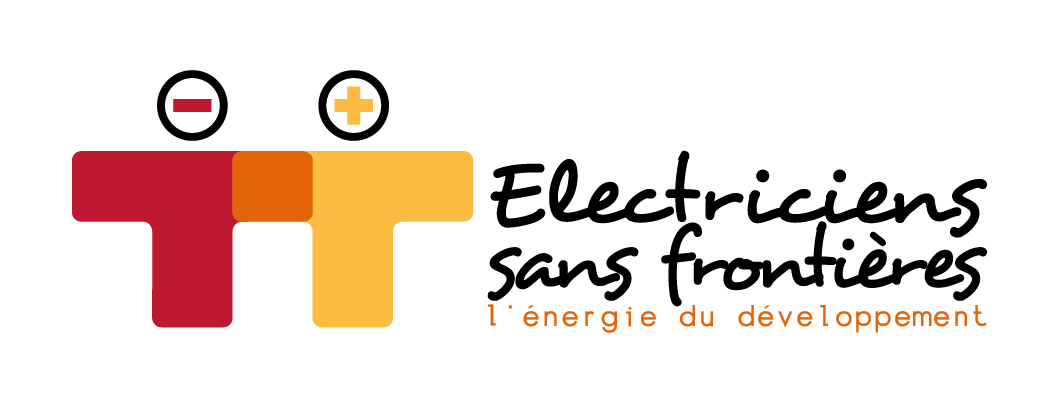Authors: Barès Serena, Berthelemy Jean-Claude, Nossek Vincent
In four articles for Entreprenante Afrique, we present Electriciens sans frontières’ Cafés Lumière in Madagascar, and compare the results of different alternative evaluation methods carried out at affordable costs to test and assess the existence of positive impacts of the project on sustainable development objectives.
In this fourth and final article, as in the “localities” section of our survey, we explore the impacts on households by comparing changes in the variables of interest in treated and untreated localities. Thanks to the number of households surveyed in each locality
[1]
we can evaluate the statistical significance of our conclusions, i.e. assess the risk that our conclusions about the existence of an impact are wrong. The variables of interest studied are those that can logically be considered as results of potential impacts of the project on households.
Access to electricity
Of the sample of households surveyed, 18% have adopted a mini-grid connection in localities equipped with a Café Lumière. Other forms of access to electricity are mainly individual fixed or mobile solar panels. The rate of access to electricity, defined as including all possible sources of electricity, is relatively similar between the two groups of localities in 2023, with 46% of households having access in localities with Café lumière versus 43% in localities without.
It should be noted, however, that the rate of access to electricity was initially higher in localities that were subsequently equipped with Café Lumière (37% vs. 27%), and this difference is significant. There has therefore been no significant improvement in access to electricity from a quantitative point of view, but there has been a replacement of individual solar panels by mini-grid connections. This second source is considered qualitatively superior. If we take as a reference the Multi Level Framework (MTF) defined by the World Bank, the first type of access is considered to be level 1, compared with level 2 for connection to the mini-grid. This is mainly due to two differences between the two types of access: higher available power and lower intermittency. This finding is corroborated by data on the use of electrical appliances.
Use of electrical equipment
To analyze the use of electrical appliances, we calculate an index which is the sum of electrical appliances used by a household. Appliances included are: stove, fridge, fan, radio, TV, VCR, DVD player, computer, tablet, landline phone, cell phone. So a household owning a fan and a radio would have a score of 2, and a household with all the goods mentioned would have a score of 11.
In the second wave of surveys, we found that households living in localities with Café Lumière used more electrical appliances than those living in localities without Café Lumière. Households living in locations with Café Lumière have an average of 1.7 electrical appliances, compared with just 1.5 in other locations. Although this difference may seem small, it is statistically significant at the 1% level.

The use of more electrical appliances in the treated localities is clearly due to the improved quality of access to electricity for the 18% of households now connected to the mini-grid.
To corroborate this conclusion, we construct a second electrical appliance usage index, taking into account only appliances requiring relatively high power to operate, generally unavailable when access to electricity is at MTF level 1. This index includes the following appliances: stove, fridge, fan, TV, VCR, DVD player and computer.
On this new index we find a very significant positive impact from Cafés Lumière. On average, households in towns without Café Lumière use only 0.20 high-power electrical appliances in 2023, compared with 0.37 in towns with Café Lumière (this figure rises to 1.20 for households using the mini-grid, whereas there was no significant difference in 2017/2018).
Household wealth
To assess the possible impact of Cafés Lumière on household wealth, we have constructed a series of synthetic indices based on variables reflecting households’ material possessions. It should be pointed out that this index therefore represents a stock of assets, and not a flow such as monthly or annual household income. We proceed with a Multiple Correspondence Analysis (MCA), a data analysis method that synthesizes information from multiple qualitative variables along a few complementary axes. The axis containing the most information is generally considered representative of household wealth. The household possessions used to calculate this synthetic wealth index take into account elements linked to the quality of the dwelling, as measured by the materials used for the floor, walls or roof, the number of rooms and floors, etc., but also electrical equipment (see list above) and all goods owned by the household, such as a bicycle, moped, car, watch, etc. Each household then has a score representing its level of wealth. This index has an average of 0, and ranges from a minimum of -2.17 for the poorest household to a maximum of 5.22 for the richest household.
When we analyze the difference in scores in 2023 between localities equipped with Café Lumière and those without, we find that the average wealth index of households living in a locality with Café Lumière is almost significantly higher. As shown in figure 1, the average wealth index for localities with Café Lumière is 0.19, compared with only 0.03 for localities that did not receive Café Lumière. The absence of a gap in 2017/2018 reinforces the robustness of this conclusion. Note that when we calculate the wealth index without taking into account ownership of electrical appliances, what we might call the “non-energy wealth index”, we find no impact from Cafés Lumière. This leads us to conclude that while the Cafés Lumière have had a positive impact on access to and use of electricity by households, this improvement in their material living conditions has not, at this stage, spread more widely.
Socio-economic data
Over and above the objectives of improving the overall energy and economic situation in the localities concerned, the main aim of the Café Lumière project is to contribute to socio-economic progress. As far as economic poverty is concerned, there has been a slight improvement in the distribution of the wealth index to the benefit of the poorest 20%, but this is not directly attributable to the introduction of the Café Lumière.
If we look at access to health and education, the areas most studied in similar evaluations, we find some evidence of impact in the former, but not in the latter. This is consistent with the “localities” section of our survey, which showed many health center connections to mini-networks, but proportionately fewer schools.
Finally, we studied the effects of the project on the uncertainty associated with theft of livestock, crops or other goods suffered by households in rural Madagascar. It is often argued that the introduction of street lighting at night can help improve this situation, but this is not clearly proven at this stage.
Regarding health issues, if we compare reports of symptoms such as respiratory tract problems (coughs/colds, etc.), diarrhea, fevers, headaches and eye problems or burns, we find that there is no significant difference between the two groups of localities in 2023. However, it is interesting to note that in the first wave of the survey, i.e. before the Cafés Lumière were installed, symptoms were much higher in localities that received Cafés Lumière, and these experienced a significant drop in symptom prevalence between the two waves, which could be interpreted as a consequence of the Café Lumière project.
Focus on deliveries: we note that deliveries taking place in an electrically-lit environment have become almost systematic in localities with a Café Lumière. In fact, 78% of women living in a locality with Café Lumière give birth in facilities with electric lighting, compared with only 40% in other localities. This difference in mean values is statistically highly significant.
Conclusion
This fourth and final stage in our series of articles on the impact assessment to date of the Café Lumière project in Madagascar has enabled us to study the benefits derived by the population of the localities concerned in terms of access to electricity and standard of living, as well as its impact on socio-economic development.
Prior to the implementation of the project, the localities studied were not characterized by absolute energy poverty, which can be defined as the absence of access to any source of electricity. On average in 2017-2018 a third of households already had access to electricity via stand-alone solar panels. The project’s most visible energy impact on households is that 18% of households in equipped localities now benefit from a mini-grid connection. For these households, this energy impact is significant, as it translates into the use of more and higher-powered electrical appliances. In our previous article on this blog, we showed that a proportion of subscribing households used their subscription both for their own needs as consumers and for income-generating activities.
We found that household wealth indexes increased in equipped localities, but only if ownership of electrical appliances is taken into account. So, for the time being, the arrival of the mini-grid does not appear to have created any economic transformation beyond the acquisition by connected households of a few electrical appliances requiring the switch to higher power and lower intermittency provided by the mini-grid. Efforts remain to be made for the poorest households, because even if they benefit from improved public services and boutique services, they are still unable to trigger real economic development. This observation echoes the fact that we showed in our previous article that, for the time being, the impact on income-generating activities had been limited to the switch to powering their production tools via the mini-grid.
In the social sphere, the arrival of mini-grids has had a positive impact on health. The situation has particularly improved with the connection of primary health centers (csb2) to the mini-networks. Improving public health has also benefited from synergies with other national and international programs, in collaboration with the World Bank and UNICEF, notably for vaccination campaigns.
The impacts observed to date appear limited, but this must be put into perspective by the fact that, for the moment, we are only seeing short-term impacts. Thus, if all equipped localities achieved the same results as the best performing locality in terms of household connections, Talata Dondona (36%), we would reach double the number of household connections. What’s more, the economic transformations that can be stimulated by purely energy-related impacts are necessarily long in coming. The same applies to socio-economic progress, which, as in the case of healthcare, may require complementary public policies.
[1]
599 households were surveyed in the first wave (2017/2018) and 595 in the second wave (2023). 133 households from the first wave were not found in the second. They were replaced by 129 new households. A total of 466 households were surveyed in the two waves.



